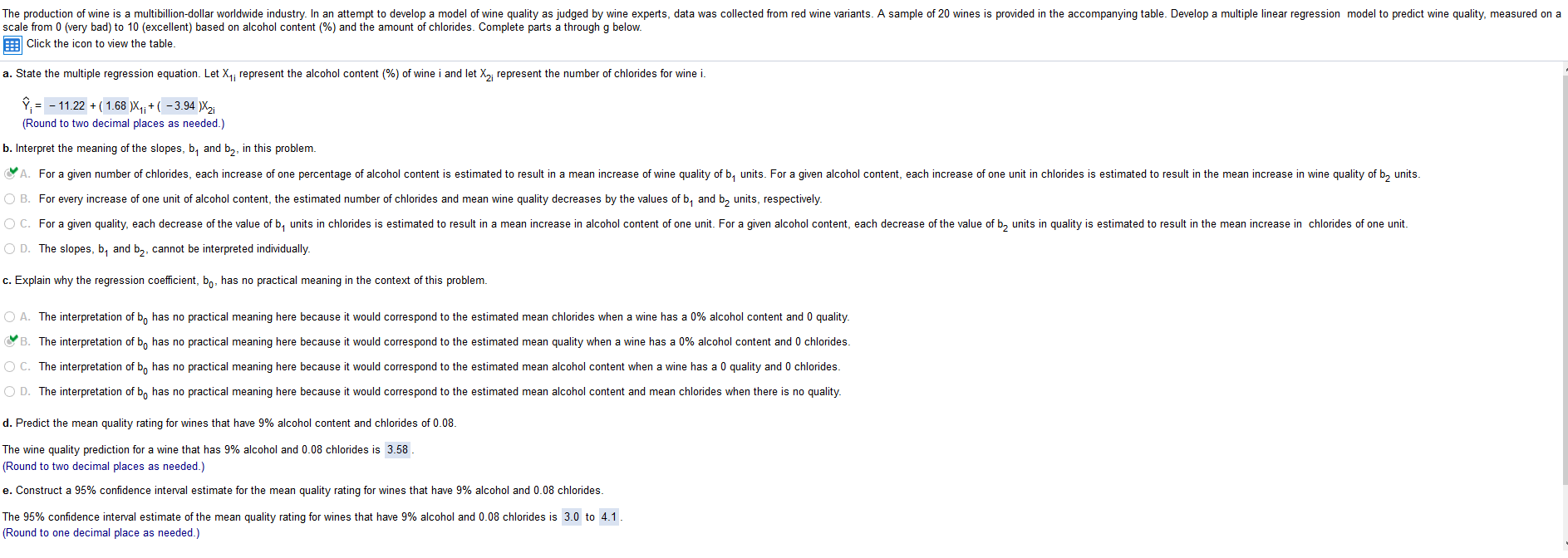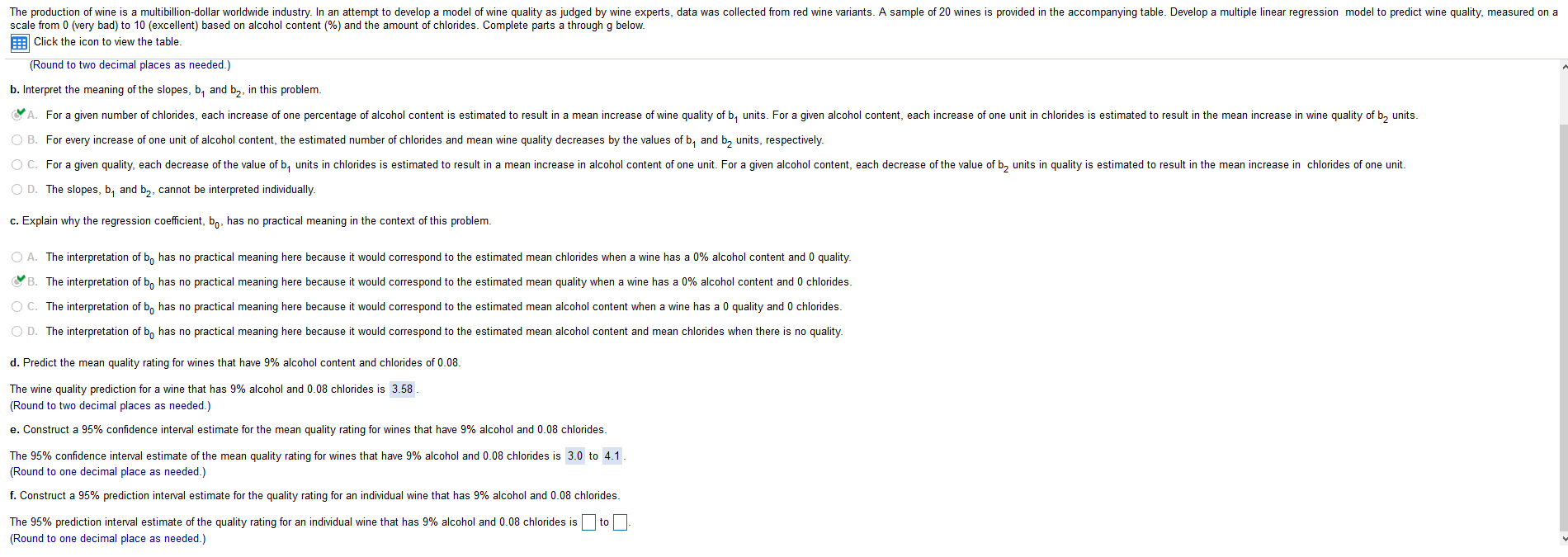Quality 1 0 2 2 2 3 3 5 6 6 7 7 5 7 8 8 7 9 9 10
Alcohol_Content(%) 7.2 7.7 8.1 8.6 8.1 8.7 8.3 9.2 10.8 10.2 10.1 10.5 10.7 11.7 11.1 11.9 12.2 11.8 12.2 12.7
Chlorides 0.064 0.069 0.072 0.073 0.066 0.077 0.073 0.074 0.085 0.076 0.079 0.081 0.084 0.082 0.095 0.095 0.145 0.123 0.159 0.152
The production of wine is a multibillion-dollar worldwide industry. In an attempt to develop a model of wine quality as judged by wine experts, data was collected from red wine variants. A sample of 20 wines is provided in the accompanying table. Develop a multiple linear regression model to predict wine quality, measured on a scale from 0 (very bad) to 10 (excellent) based on alcohol content (%) and the amount of chlorides. Complete parts a through g below. Click the icon to view the table. a. State the multiple regression equation. Let X,; represent the alcohol content (%) of wine i and let X2; represent the number of chlorides for wine i. Y, = - 11.22 + ( 1.68 ),; + (-3.94 )X2i (Round to two decimal places as needed.) b. Interpret the meaning of the slopes, b, and b2, in this problem. A. For a given number of chlorides, each increase of one percentage of alcohol content is estimated to result in a mean increase of wine quality of b, units. For a given alcohol content, each increase of one unit in chlorides is estimated to result in the mean increase in wine quality of b2 units. O B. For every increase of one unit of alcohol content, the estimated number of chlorides and mean wine quality decreases by the values of b, and by units, respectively O C. For a given quality, each decrease of the value of b, units in chlorides is estimated to result in a mean increase in alcohol content of one unit. For a given alcohol content, each decrease of the value of by units in quality is estimated to result in the mean increase in chlorides of one unit. O D. The slopes, b, and b2, cannot be interpreted individually. c. Explain why the regression coefficient, bo, has no practical meaning in the context of this problem. O A. The interpretation of bo has no practical meaning here because it would correspond to the estimated mean chlorides when a wine has a 0% alcohol content and 0 quality. B. The interpretation of bo has no practical meaning here because it would correspond to the estimated mean quality when a wine has a 0% alcohol content and 0 chlorides. O C. The interpretation of bo has no practical meaning here because it would correspond to the estimated mean alcohol content when a wine has a 0 quality and 0 chlorides. O D. The interpretation of bo has no practical meaning here because it would correspond to the estimated mean alcohol content and mean chlorides when there is no quality. d. Predict the mean quality rating for wines that have 9% alcohol content and chlorides of 0.08. The wine quality prediction for a wine that has 9% alcohol and 0.08 chlorides is 3.58. (Round to two decimal places as needed.) e. Construct a 95% confidence interval estimate for the mean quality rating for wines that have 9% alcohol and 0.08 chlorides The 95% confidence interval estimate of the mean quality rating for wines that have 9% alcohol and 0.08 chlorides is 3.0 to 4.1 . (Round to one decimal place as needed.)\f








